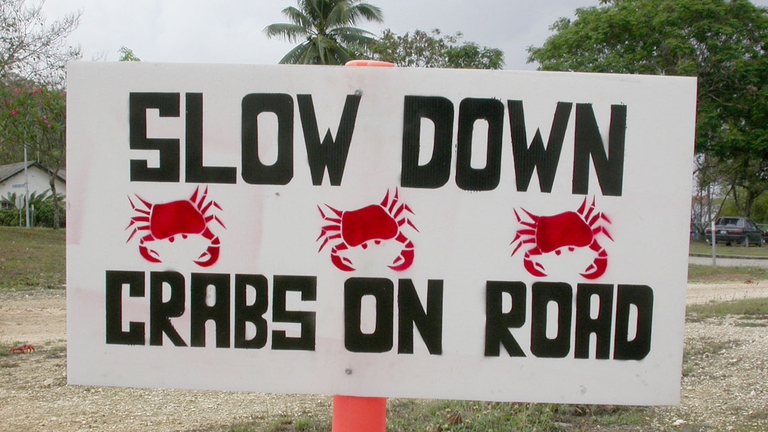
A group of experts in Tokyo suggested pouring radioactive water from Fukushima into the open sea. A marine biochemist explains the consequences of this absurd decision.
Once a year on Christmas Island something incredible happens: millions of crabs cross the whole island to reach the ocean, where they drop their eggs.
Around fifty million red crabs (Gecarcoidea natalis) are estimated to live on Christmas Island, located in the Indian Ocean off the northwestern coast of Australia, which it is a part of. Between October and December, at the beginning of the wet season, these animals start an incredible journey across the island, leaving their homes in the inland to go to the seaside and lay their eggs.
Female crabs have to drop their eggs into the water (this is known as spawning) “before sunrise on spring tides during the last quarter of the moon”, the Australian government reports. The migration begins when crabs are sure they can complete the journey, mate and then brood the eggs for two weeks before spawning. This year the possible spawning dates are 22-24 November and 21-23 December, during the Austral Spring. Four or five weeks before these dates crabs are expected to begin their migration to the ocean across forests, cliffs and roads.
Once they’ve reached the seaside, crabs dip in the ocean to replenish body moisture and salts. Then males dig holes in the sand where the mating occurs, and after that they start their journey back. Females remain inside the burrows and brood the eggs for two weeks before dropping them into the water and leaving the beach too. The eggs hatch into larvae which will soon evolve into baby crabs, whose carapace is only 5 millimetres long. They immediately start their parent’s same journey to the inland in order to find a place to live among the rocks. After four or five years they will become adults and will be ready to mate.
People on the island do everything they can to avoid crabs’ accidental death. So they build bridges and underground tunnels to allow them to cross streets safely. During the peak of migration some roads are closed and traffic is diverted away from where you can actually see a “red carpet” moving on the road surface.
Siamo anche su WhatsApp. Segui il canale ufficiale LifeGate per restare aggiornata, aggiornato sulle ultime notizie e sulle nostre attività.
![]()
Quest'opera è distribuita con Licenza Creative Commons Attribuzione - Non commerciale - Non opere derivate 4.0 Internazionale.
A group of experts in Tokyo suggested pouring radioactive water from Fukushima into the open sea. A marine biochemist explains the consequences of this absurd decision.
The decline in grey and humpback whales in the Pacific and Atlantic Oceans has been traced to food shortages caused by rising ocean temperatures.
The United Nations has launched a major international alliance for ocean science, undertaking a mission close to all our hearts.
The cargo ship that ran aground off the coast of Mauritius on 25 July, causing incalculable damage, has split in two and its captain has been arrested.
The largest coral reef in the world is severely threatened by climate change, but researchers are developing strategies that could contribute to saving the Great Barrier Reef.
Seychelles have extended its marine protected area, which now covers over 400,000 square kilometres, an area larger than Germany.
Norwegian oil giant Equinor had pulled out of drilling for oil in the Great Australian Bight, one of the country’s most uncontaminated areas. A victory for activists and surfers who are now campaigning for the area to be protected forever.
30 per cent of the planet needs to be protected to stop precipitous species decline. The UN has set out its aims for the the COP15 on biodiversity scheduled for Kunming, China in October.
Ocean warming has risen to record highs over the last five years: just in 2019 the heat released into the world’s oceans was equivalent to that of 5-6 atomic bombs per second. The culprit, no doubt, is climate change.








